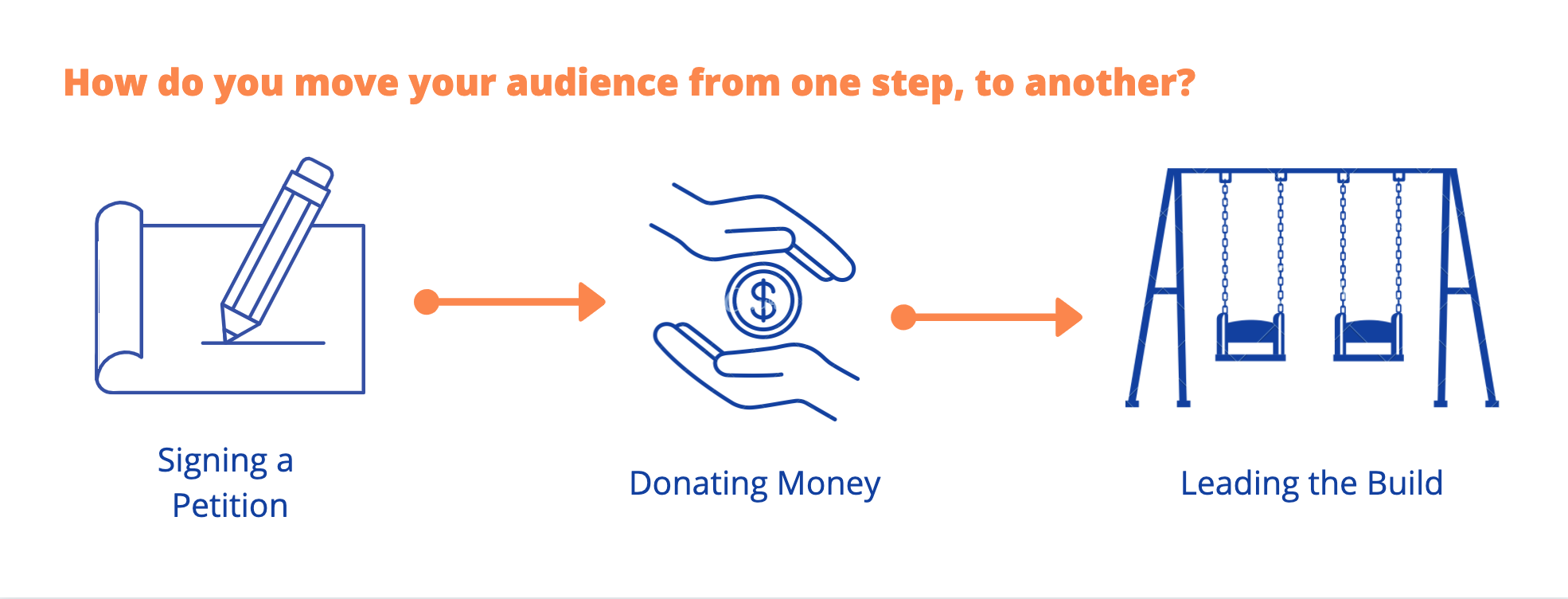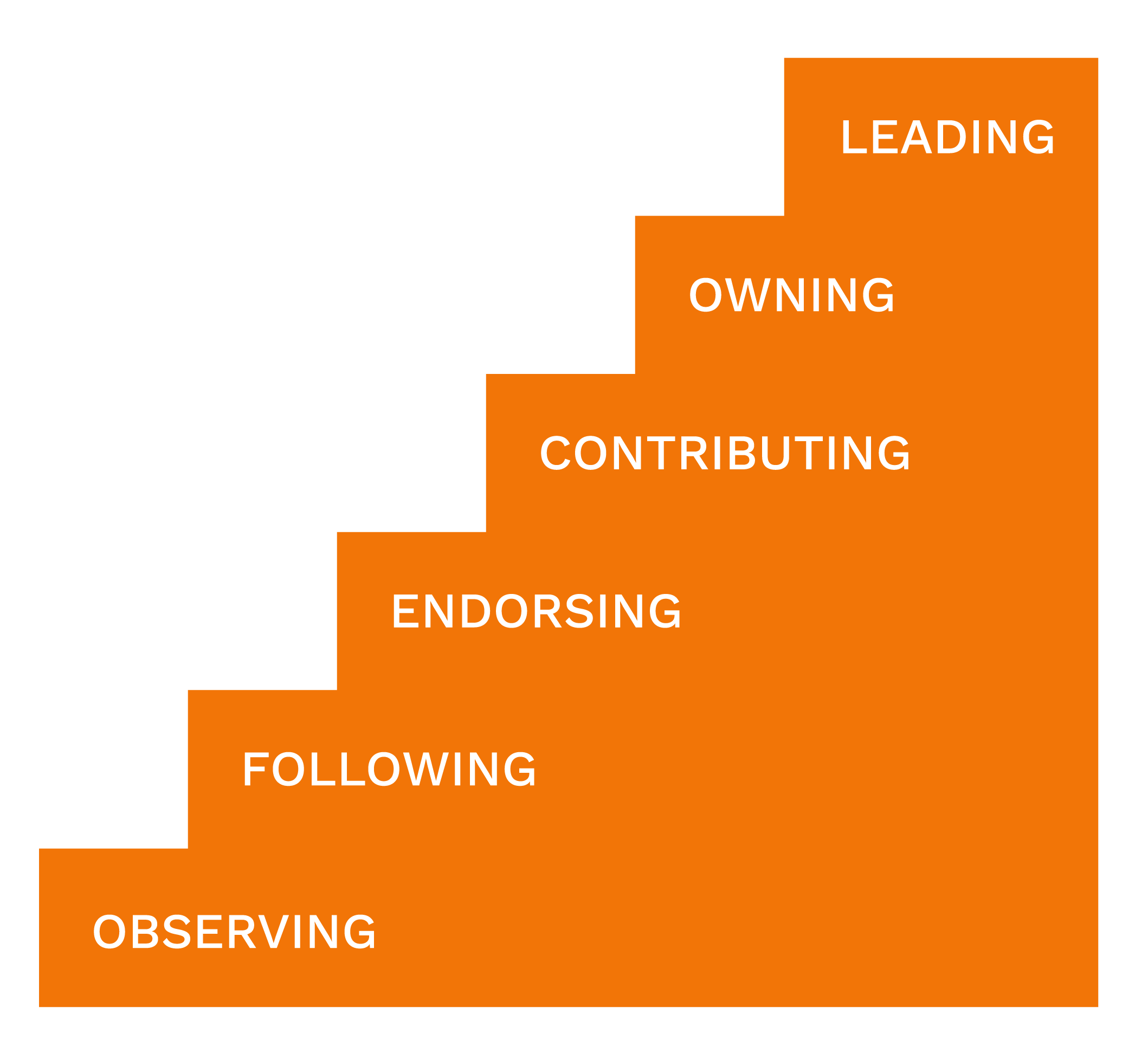The Engagement Ladder Theory
10 The Engagement Ladder Theory

Defining the Engagement Ladder
The Ladder of Engagement is a tool that can be used to build relationships with your audience over time in order to deepen their commitment to your organization. Barefoot, Tsazo, and Lamb (2014) stated that “the Engagement Ladder Theory is based on the concept that all organizations have audiences connected to them with different levels of awareness, passion, and commitment.” This theory suggests that people are likely to become supporters of your organization by taking easy actions, but can be consciously led up the ladder to take harder and harder actions.

These shifts are fundamental to more meaningful involvement that leads to consensus building and the types of solutions that can transform communities.
Using the Engagement Ladder to Gain Support
The Engagement Ladder Theory suggests that the audiences of any organization can have different levels of connection to them. Because of this, audiences have different levels of engagement and require interactions and communications that are tailored to their needs. The engagement ladder concept provides an understanding of how charities gain support, financially and otherwise. There are six steps to building effective, long-term, community support.

1. Leading
Nonprofits need strong leadership to grow resources and mission impact. It’s possible to recruit board members using traditional tactics, but helping leadership evolve up the engagement ladder brings authentic, committed, effective people to the top posts in a nonprofit.
2. Owning
Although some donors just make a small contribution and then move on, there’s still room to move further up the ladder. When a donor views an organization as their go-to charity in a certain category, then they are more likely to become a volunteer and bring their own friends and ideas to the table. Nonprofits can use self-reporting tools and surveys to find “owners” and move them further up the ladder.
3. Contributing
Many nonprofits consider getting a new donor as the end of a process. This step can also be seen as a qualifier for those who may be ready to bring in new people to start at the base of the engagement. Word of mouth request for engagement is more likely to start a conversation than bulk solicitations from a charity.
4. Endorsing
A supporter that shares a status update or forwards an email is more valuable than one that would read it and move on. This means that communication from your organization should be valuable enough to the supporter to make them want to share it.
5. Following
There is too much clutter to assume that observing a nonprofit once will hold a supporter’s attention. A viewer should find enough value in a charity to feel the need to stay connected. Email newsletters, social channels, and web-based seminars are some ways to engage observers and keep them moving up the engagement ladder.
6. Observing
Getting introduced to potential new supporters is difficult. However, getting found can be achieved through careful search engine strategy, select paid promotions, using the right social networks for the right audience and more. You have to cut through the clutter if you want your non-profit organization to be discovered.
Attribution
This page contains material taken from:
Barefoot, D., Szabo, J., & Lamb, T. (2014). The Noble Arsonist [EPub]. Retrieved from https://www.capulet.com/noble-arsonist
Engel, E. C. W. (2018, September 5). Membership 101: Ladder of Engagement. Retrieved June 1, 2020, from https://www.getmespark.com/membership-101-ladder-of-engagement/
Thorman, D. (n.d.). Digital Citizenship. Retrieved May 30, 2020, from https://www.knightfoundation.org/digitalcitizenship/
Next in Nonprofits. (2015, December 31). Engagement Ladder. Retrieved May 30, 2020, from https://www.nextinnonprofits.com/2015/12/engagement-ladder-2016/
A tool that can be used to build relationships with your audience over time in order to deepen their commitment to your organization.

